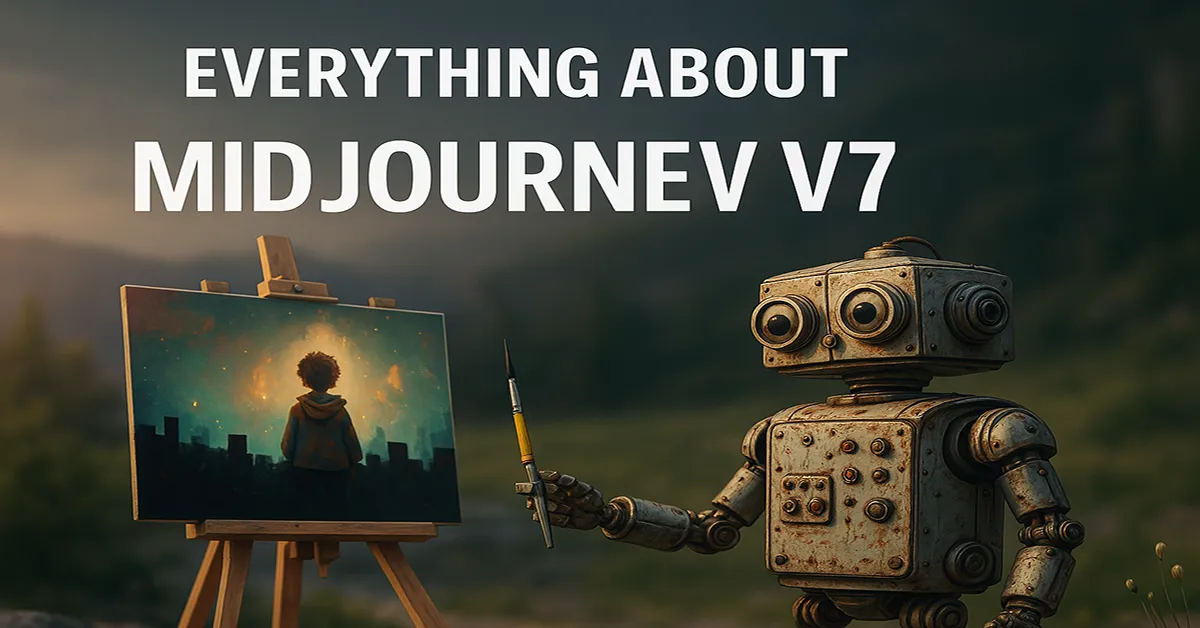- Kimi-VL: Redefining Multimodal AI with Compact Efficiency and Long-Context Brilliance
- The Rise of Multimodal AI: Why It’s a Big Deal
- The Multimodal Challenge
- Kimi-VL Unveiled: A Lean, Mean Multimodal Machine
- MoonViT: A Visionary Leap
- Long-Context Superpower: 128K Tokens and Counting
- Kimi-VL-Thinking: The Brainy Variant
- How Kimi-VL Outshines Its Rivals
- Real-World Impact: Where Kimi-VL Shines
- Benchmarks: Proof in the Numbers
- The Training Journey: Building Kimi-VL from the Ground Up
- Why Kimi-VL Matters for the Future
- Challenges and Opportunities
- Actionable Insights for Users
Kimi-VL: Redefining Multimodal AI with Compact Efficiency and Long-Context Brilliance
Picture this: an AI that doesn’t just read your words but sees the world through your eyes—decoding images, videos, and dense documents as effortlessly as you flip through a magazine. That’s the magic of multimodal AI, and Moonshot AI’s Kimi-VL, launched on April 11, 2025, is stealing the spotlight. With its lean 2.8 billion parameter architecture, support for 128K token contexts, and a knack for high-resolution visual processing, Kimi-VL is more than a model—it’s a glimpse into the future of intelligent systems. Why is everyone buzzing about it? Let’s unpack the details behind this compact powerhouse and explore how it’s reshaping multimodal reasoning, long-context understanding, and visual intelligence.
The Rise of Multimodal AI: Why It’s a Big Deal
In a world bursting with information—text messages, viral videos, academic PDFs, app interfaces—relying solely on language models feels like trying to cook a gourmet meal with just a spoon. Multimodal AI steps in as the full kitchen, blending text, images, and more to mimic human-like understanding. Think of it as an AI that can read a textbook, analyze its diagrams, and summarize a related lecture video, all in one go. This versatility is why multimodal systems are surging in demand across industries, from education to tech to healthcare.
The Multimodal Challenge
Despite their promise, many multimodal models hit roadblocks:
- Limited Context: Most handle only a few thousand tokens, choking on long documents or extended dialogues.
- Resource Hunger: High-performance models often demand massive computational power, pricing out smaller teams.
- Visual Gaps: Fixed vision encoders struggle with diverse resolutions or complex scenes, like UI screenshots or handwritten notes.
Kimi-VL tackles these head-on, offering a solution that’s efficient, scalable, and razor-sharp in reasoning. But how does it pull this off? Let’s dive into its architecture.
Kimi-VL Unveiled: A Lean, Mean Multimodal Machine
At its core, Kimi-VL is a vision-language model built on a Mixture-of-Experts (MoE) framework, activating just 2.8 billion parameters during inference while supporting a total of 16 billion. This efficiency is a game-changer, making high-end multimodal AI accessible without the need for a supercomputer. Available in two flavors on Hugging Face—Kimi-VL-A3B-Thinking and Kimi-VL-A3B-Instruct—it combines three key components:
- MoonViT Visual Encoder: Processes images in their native resolution.
- MLP Projector: Bridges visual features to language embeddings.
- Moonlight MoE Decoder: Handles text and visual data with seamless integration.
Together, these elements enable Kimi-VL to excel in tasks from optical character recognition (OCR) to long-video analysis.
MoonViT: A Visionary Leap
Most vision-language models chop high-resolution images into smaller patches, losing critical details. MoonViT flips the script by processing images natively, preserving every pixel’s worth of information. How? It uses:
- Interpolated Absolute Positional Embeddings: Ensures spatial consistency across resolutions.
- Two-Dimensional Rotary Embeddings: Maintains detail along height and width, ideal for complex visuals like UI screens or academic diagrams.
The result is a model that can read tiny text in a scanned document or spot subtle errors in a crowded app interface, all without breaking a sweat.
Long-Context Superpower: 128K Tokens and Counting
Ever tried summarizing a 2-hour video or a 100-page report with an AI that forgets half the content? Kimi-VL laughs at that challenge. Trained progressively to handle sequences from 8K to 128K tokens, it boasts:
- 100% Token Recall up to 64K tokens.
- 87% Accuracy at 128K tokens, outpacing most competitors.
This makes it a rockstar for tasks like analyzing lengthy academic papers, extended video transcripts, or multi-turn conversations, where context is king.
Kimi-VL-Thinking: The Brainy Variant
For tasks requiring deep reasoning—like solving math problems or debugging code—Kimi-VL-Thinking steps up. Fine-tuned with chain-of-thought supervision and reinforcement learning, it’s built for long-horizon thinking. Whether it’s untangling a tricky geometry diagram or reasoning through a UI error log, this variant delivers answers with clarity and precision.
How Kimi-VL Outshines Its Rivals
To appreciate Kimi-VL’s brilliance, let’s compare it to the competition. Models like Qwen2.5-VL and Gemma-3 are solid but lack support for long-context reasoning. DeepSeek-VL2 and Aria, while innovative, are hamstrung by:
- Fixed Vision Encoders: Struggle with diverse image resolutions.
- Short Context Windows: Limited to 4K tokens in some cases.
- Resource Demands: Require hefty hardware for peak performance.
Kimi-VL sidesteps these pitfalls with:
- Compact Efficiency: Uses fewer active parameters, slashing costs.
- Flexible Vision: Adapts to any image resolution without fragmentation.
- Extended Context: Handles up to 128K tokens with high accuracy.
This balance of power and practicality sets Kimi-VL apart as a go-to for developers and researchers alike.
Real-World Impact: Where Kimi-VL Shines
Kimi-VL isn’t just a lab experiment—it’s built for the real world. Here’s how it’s making waves across sectors:
Education: A Study Buddy Like No Other
Students juggling textbooks, lecture slides, and video tutorials can lean on Kimi-VL to:
- Extract key points from dense academic PDFs.
- Explain diagrams, like circuit schematics or biological cycles.
- Summarize long video lectures with pinpoint accuracy.
Imagine uploading a calculus textbook page with graphs and getting a step-by-step breakdown in seconds. That’s Kimi-VL in action.
Tech: Streamlining Development
For developers, Kimi-VL is a debugging dream:
- Analyzes UI screenshots to spot layout errors.
- Cross-references error logs with visual inputs for faster fixes.
- Interprets wireframes alongside project specs.
It’s like having a second pair of eyes that never miss a detail, saving hours of troubleshooting.
Healthcare: Precision in Diagnostics
In medical settings, Kimi-VL can:
- Interpret X-rays or MRIs alongside patient notes.
- Extract data from handwritten prescriptions or scanned records.
- Summarize research papers for quick insights.
Its high-resolution processing ensures no detail is overlooked, potentially speeding up diagnoses.
Content Creation: Fueling Creativity
Marketers and creators can use Kimi-VL to:
- Analyze video trends for campaign ideas.
- Generate captions for complex infographics.
- Summarize competitor content across text and visuals.
Its ability to handle diverse inputs makes it a Swiss Army knife for creative workflows.
Benchmarks: Proof in the Numbers
Kimi-VL’s performance is more than hype—it’s backed by stellar benchmark scores:
- LongVideoBench: 64.5, excelling in video comprehension.
- MMLongBench-Doc: 35.1, mastering long-document analysis.
- InfoVQA: 83.2, leading in visual question answering.
- ScreenSpot-Pro: 34.5, acing UI understanding.
- MMMU (Kimi-VL-Thinking): 61.7, shining in multimodal reasoning.
- MathVista (Kimi-VL-Thinking): 71.3, dominating math-related tasks.
These numbers show Kimi-VL competing with giants like GPT-4o while using a fraction of the resources, making it a standout in the open-source arena.
The Training Journey: Building Kimi-VL from the Ground Up
Creating Kimi-VL was a Herculean task, involving 4.4 trillion tokens across diverse datasets:
- 2.0T Tokens for MoonViT training, using image-caption pairs.
- 0.1T Tokens for aligning the encoder with the decoder.
- 1.4T Tokens for joint pre-training, blending text and visuals.
- 0.6T Tokens for cooldown, refining performance.
- 0.3T Tokens for long-context activation, pushing to 128K tokens.
The datasets included:
- Academic visuals for OCR and document tasks.
- Long video clips for contextual learning.
- Synthetic QA pairs for math, code, and reasoning.
The team used a custom Muon optimizer with ZeRO-1 memory strategies to manage the massive parameter count, ensuring efficient training without sacrificing quality. RoPE embeddings, extended from 50,000 to 800,000 base frequency, enabled robust long-context performance.
Why Kimi-VL Matters for the Future
Kimi-VL isn’t just a tool—it’s a blueprint for what multimodal AI can achieve. Its compact design democratizes access, letting startups and solo developers tap into high-end capabilities. Its long-context mastery and visual precision address real-world needs, from academic research to enterprise workflows. As AI evolves, models like Kimi-VL will bridge the gap between human intuition and machine intelligence, making interactions more natural and insightful.
Challenges and Opportunities
No model is perfect. Kimi-VL’s 87% recall at 128K tokens, while impressive, leaves room for growth. Future iterations could push for even longer contexts or tighter integration of audio inputs. Yet, its current strengths—efficiency, adaptability, reasoning—position it as a leader in the multimodal race.
Actionable Insights for Users
Ready to harness Kimi-VL? Here’s how to get started:
- Test the Models: Download Kimi-VL-A3B-Thinking or Kimi-VL-A3B-Instruct from Hugging Face.
- Tackle Long Contexts: Use it for video analysis, lengthy reports, or multi-turn chats.
- Leverage Visual Power: Apply its high-res capabilities for OCR, UI debugging, or academic tasks.
- Join the Conversation: Share your experiments on platforms like X to connect with the AI community.
- Stay Informed: Follow Moonshot AI’s blog for updates on Kimi-VL and beyond.
Dive into Kimi-VL on Hugging Face or share your thoughts below—what’s the first task you’d throw at this AI?






